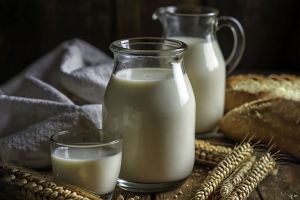Green tea stands as a popular favorite among beverage enthusiasts, known for its delicate flavors and remarkable health benefits.
With such a rich diversity in varieties, choosing the ideal green tea requires a knowledge of its origins, processing styles, and characteristics.
This journey into the world of green tea will be an exciting exploration through different cultures and brewing techniques, promising to enhance the appreciation of this cherished beverage.
Terroir Matters
One significant factor in the flavor profile of green tea is its terroir—the distinct environment in which the tea is cultivated. Various regions impart unique characteristics due to differences in climate, soil, and traditional processing methods.
For instance, Chinese green tea, like Dragonwell (Longjing) and Bi Luo Chun, often features nutty, roasted notes attributed to the technique of pan-firing, resulting in an inviting warmth.
In contrast, Japanese green teas such as Sencha and Matcha undergo steaming, producing vibrant green leaves with a savory umami flavor, laced with grassy and oceanic undertones. India, while famous for its bold black teas, surprises with the Darjeeling and Nilgiri regions, which offer bright and floral notes in their green teas.
Understanding Varieties
Another critical aspect to consider is the variety of the tea plant. The two main types—Camellia sinensis var. sinensis and Camellia sinensis var. assamica—give rise to different flavor profiles.
The former, originating from China, lends itself to lighter, more aromatic cups, while the latter, predominantly grown in India and Yunnan, is often bolder and more astringent. However, with skillful processing, remarkable green teas can emerge from the assamica variety as well.
Sourcing Quality
To enjoy premium green tea, direct sourcing from farmers is crucial. When teas are freshly harvested and not blended with inferior leaves, the difference is palpable in taste. As green tea is best savored soon after production, look for harvest dates on packaging to ensure maximum freshness.
It’s important to understand the distinction between pure green teas and flavored blends. Pure varieties allow the tea's natural flavors to shine, while blends may mask lower quality with additional flavors. Quality should remain a priority in both instances.
Steeping Perfection
No matter how exceptional a green tea may be, improper brewing can ruin the experience. The water temperature is essential—maintaining it between 165–180°F (74–82°C) helps prevent bitterness. Steeping times vary;
generally, a range of 30 seconds to 2 minutes works well, depending on the specific tea and personal taste.High-quality green teas can often withstand multiple infusions, each revealing new facets of flavor—such as floral or umami characteristics.
Flavor Profiles
Exploring the tasting notes of green tea is a delightful experience. Common flavors include vegetal, floral, and hints of citrus. Some varieties even present a savory umami quality. These layers of flavor can be balanced and nuanced when brewed correctly, providing a fantastic tea-drinking experience.
Conclusion: Embrace the Journey
Selecting the right green tea is a rewarding journey of exploration. With an understanding of regional origins, the varieties of the plant, and the intricacies of brewing, tea lovers can appreciate the unique attributes each cup has to offer.
From the toasty notes of Chinese green tea to the umami-rich flavors of Japanese varieties, there is an endless world waiting to be discovered. Take time to explore, enjoy, and cherish the remarkable subtleties of green tea.


